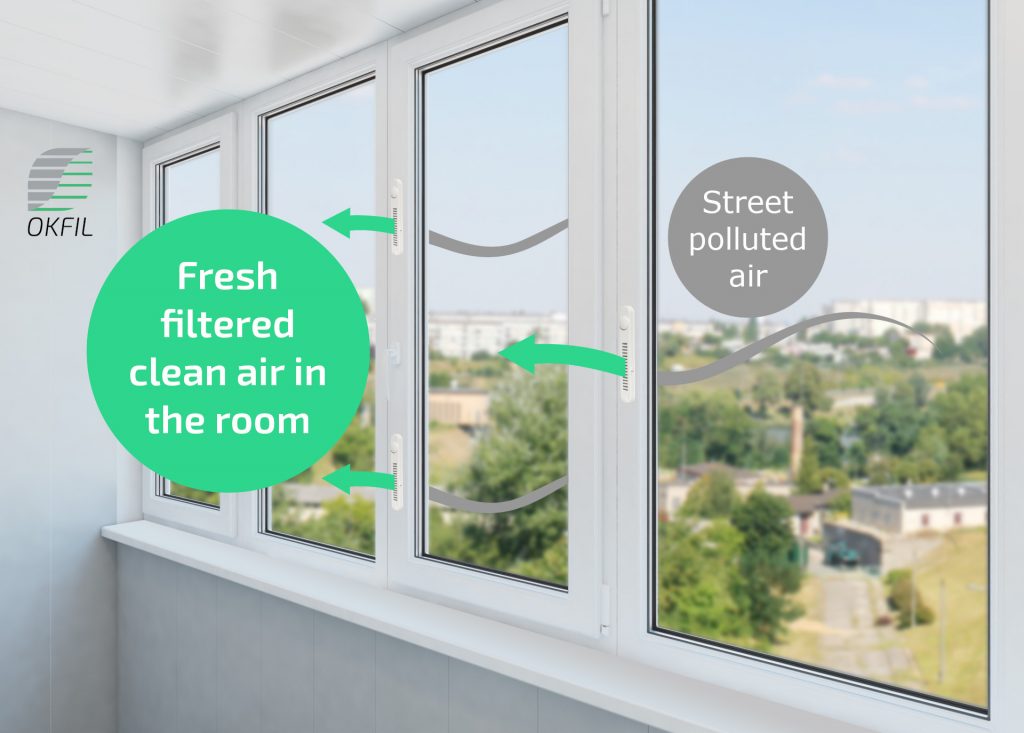Recent studies of Canadian activity patterns show most of our time is spent in conditioned spaces or enclosures where the indoor air may differ from that of outside. Homes are the conditioned spaces where most time is spent, followed by offices, schools or workplaces and commercial establishments, as well as cars and buses. As such, for the majority of Canadians, the quality of air inside homes and workplaces/offices has the greatest impact on individual exposures to air pollutants. Children, elderly people, and other vulnerable populations are at a greater risk of adverse effects from poor IAQ than the average homeowner.
There are some strategies available to maintain and improve IAQ in homes.
 The first strategy recommended by Health Canada is to minimize sources of indoor air contamination. Examples of indoor source control include not smoking; ensuring proper maintenance of all fuel-burning appliances (e.g. fireplaces, stoves); avoiding car idling or generators operating in the vicinity of windows, doors, and air intakes; avoiding the use of barbecues or any other combustion equipment in attached garages; controlling humidity levels and avoiding dampness indoors (e.g., by repairing water leaks); using low level emitting volatile organic compound (VOC) consumer products and building materials; and limiting or avoiding the use of products such as candles and deodorizers.
The first strategy recommended by Health Canada is to minimize sources of indoor air contamination. Examples of indoor source control include not smoking; ensuring proper maintenance of all fuel-burning appliances (e.g. fireplaces, stoves); avoiding car idling or generators operating in the vicinity of windows, doors, and air intakes; avoiding the use of barbecues or any other combustion equipment in attached garages; controlling humidity levels and avoiding dampness indoors (e.g., by repairing water leaks); using low level emitting volatile organic compound (VOC) consumer products and building materials; and limiting or avoiding the use of products such as candles and deodorizers.
The second most important strategy for improving IAQ is to ensure efficient ventilation to introduce outside air into the building and exhaust polluted indoor air in order to remove or dilute it. Bringing in relatively clean outside air and mixing it with indoor air will reduce concentrations of gas-phase pollutants that have accumulated inside. There are many standards and codes that specify the minimum amount of outdoor air that should be supplied to the house to achieve good IAQ (ASHRAE 2016a, 2016b; CAN/CSA 2014; NBC 2010). These standards and codes vary somewhat and are often expressed in different units. The Canadian ones are expressed in metric units of litres per second (L/s). Generally, they require ventilation rates of about 5 to 10 L/s of outdoor air for each house occupant or roughly a complete house air change every three hours, but these rates vary according to the number of occupants, house volume, occupant activities, and the presence of indoor sources of pollutants. In a typical house, these target ventilation rates are established to dilute air pollutants generated within the house (including carbon dioxide, humidity, and odours) as well as some pollutants off-gassing from the house structure, building materials, furniture, and consumer products. However, in the case of a home located in an area with poor outdoor air quality, increasing ventilation may not improve IAQ. Ventilation could then be scheduled during periods of low outdoor pollution levels (e.g., non-rush hour periods or when smog levels are low).
The third strategy is to remove pollutants that are already in the air through the use of air cleaners or filtration. Filtration is most effective for pollutants such as particles and has been shown to be an effective method for reducing the risk of particle-related mortality. Filtration appears to have contributed to improvement in lung function in a study examining smokers who used an electrostatic precipitator to remove airborne particles. It should be noted that filtration/air cleaning can be expensive or ineffective for gaseous indoor air pollutants such as carbon monoxide.
Considering the air pollution OKFIL Window Filters Company is producing window filters and expanding its’ usage all over the world. The main advantage of the window filters is that they do not consume electricity and can be mounted on already installed windows. OKFIL Window Filters allow ventilating the room 24/7 without noise, dust and air drafts. It is a compact plastic device with a replaceable filter element (cartridge). It is installed in the window profile and starts working immediately – it purifies the air and creates comfortable conditions even when the windows are closed. Especially it is necessary for those who live and work near a busy highway or factories.

You may find more details about ventilation in Canadian houses at https://www.canada.ca/en/health-canada/services/publications/healthy-living/ventilation-indoor-environment.html#a8
© All rights reserved. Ventilation and the Indoor Environment. Health Canada, 2018.
Adapted and reproduced with permission from the Minister of Health, 2018.
If you have more questions about window filters please contact OKFIL Window Filters Company.
